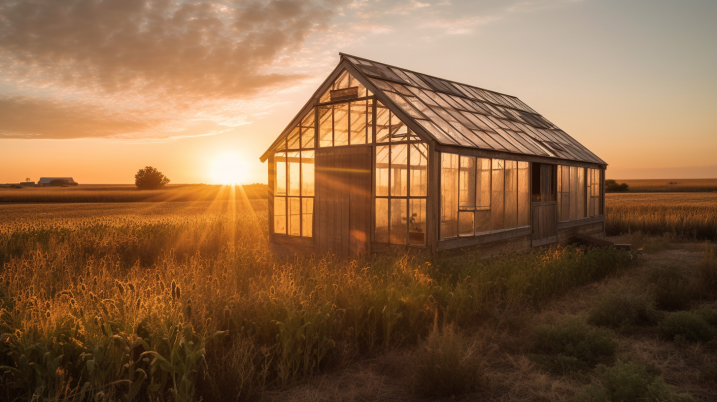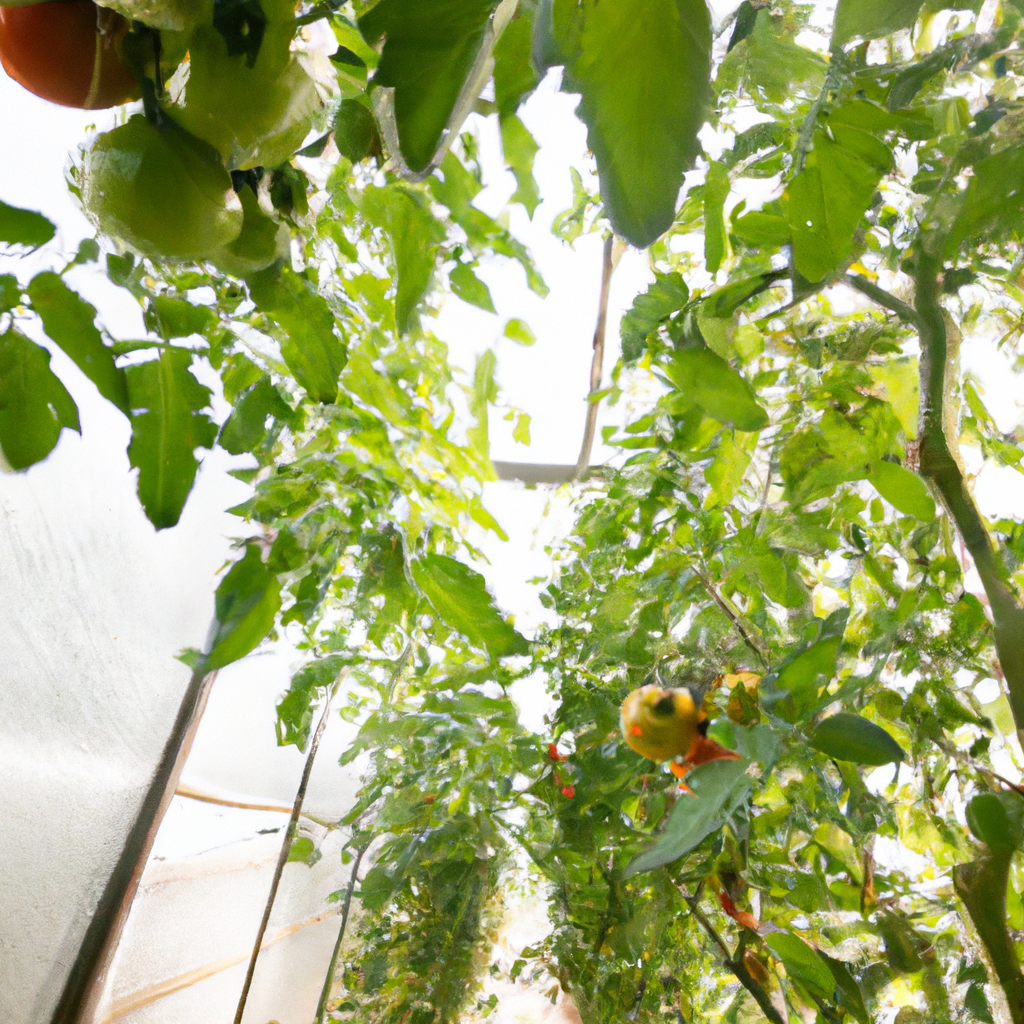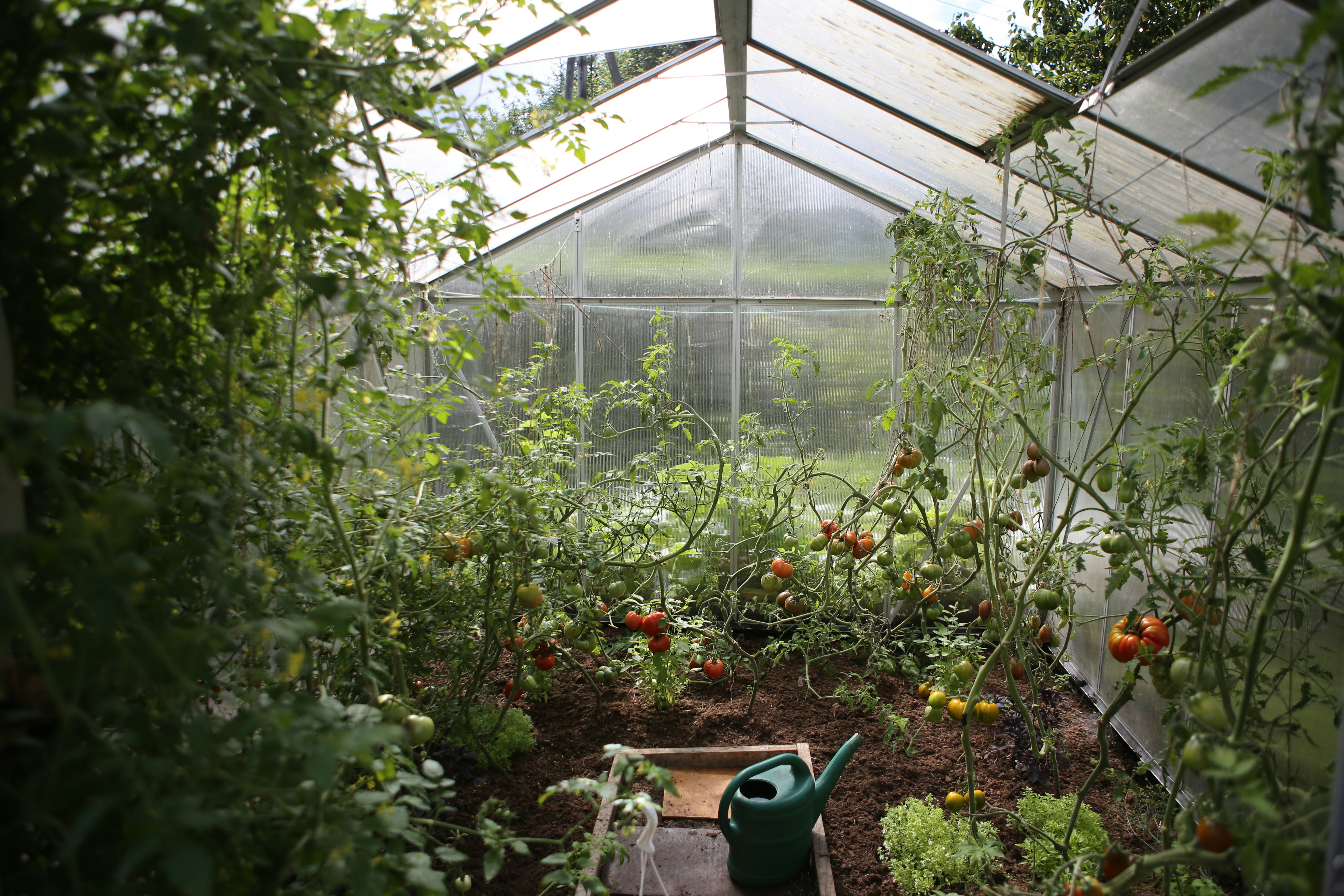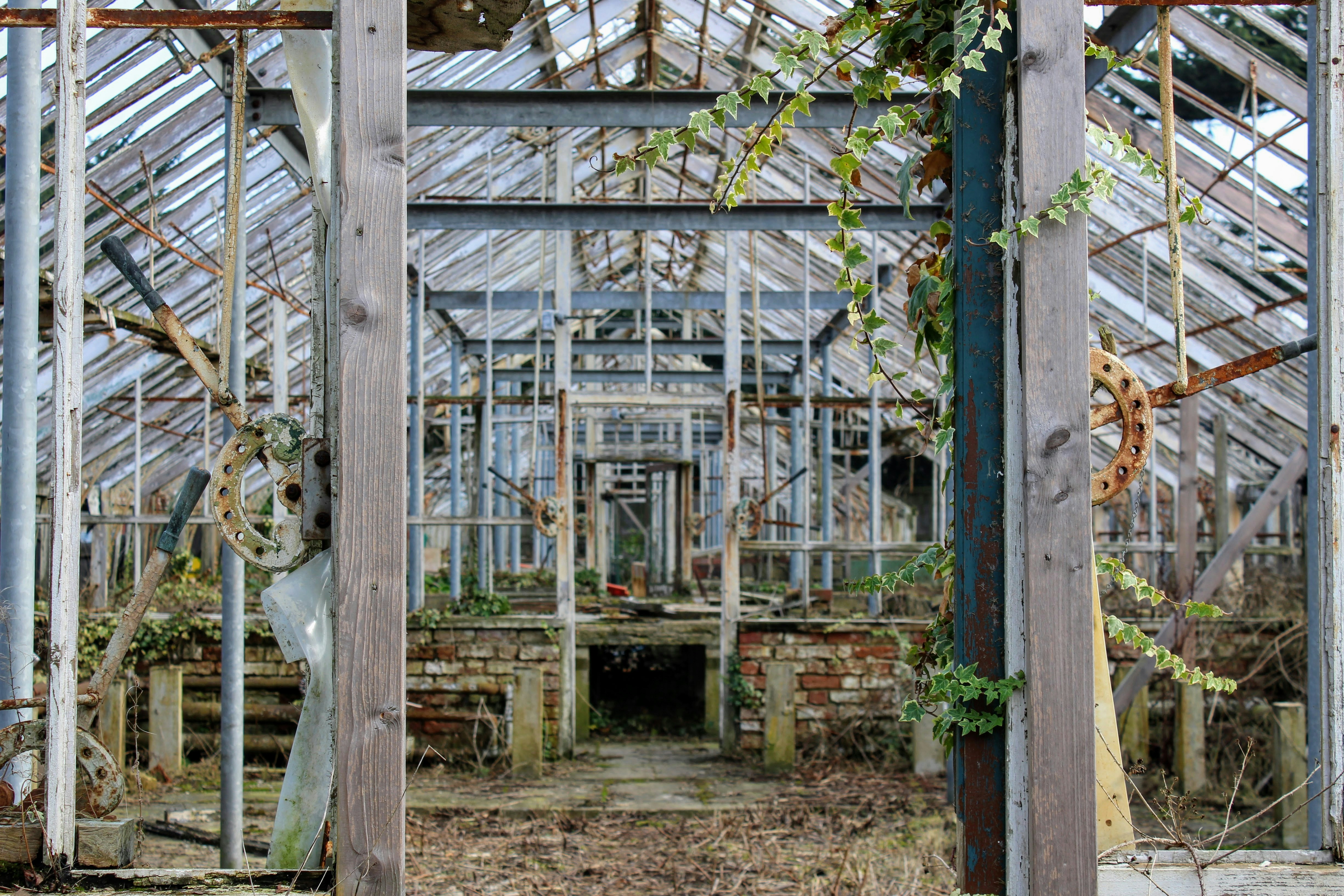
Have you ever wondered how long a greenhouse lasts? Well, the lifespan of a greenhouse can vary depending on several factors. Factors such as the quality of materials used, the type of greenhouse structure, and the maintenance practices implemented all play a role in determining its longevity. In this article, we will explore the average lifespan of a greenhouse, as well as provide tips on how to extend its lifespan and ensure it continues to thrive for years to come. So, if you are a gardening enthusiast or considering investing in a greenhouse, keep reading to discover all you need to know about the lifespan of these marvelous structures.

Factors Affecting Greenhouse Lifespan
When it comes to the lifespan of a greenhouse, several factors come into play. Understanding these factors can help you make informed decisions regarding the materials, construction techniques, and maintenance required for your greenhouse. Here are the key factors that can affect the lifespan of a greenhouse:
Quality of Materials
The quality of the materials used in the construction of a greenhouse plays a significant role in determining its lifespan. High-quality materials, such as durable frames and strong glazing, are more likely to withstand the test of time and resist damage from environmental factors.
Construction Techniques
The construction techniques employed in building a greenhouse can also impact its longevity. Proper installation and assembly, including the correct tensioning of film or glazing, can ensure structural integrity and prevent damage caused by stress or shifting.
Environmental Conditions
The environmental conditions in which a greenhouse is located have a major influence on its lifespan. Factors such as temperature extremes, humidity levels, and exposure to wind, snow, or hail can all affect the durability of the structure and the performance of its components.
Maintenance and Repairs
Regular maintenance and timely repairs are critical for extending the lifespan of a greenhouse. Cleaning, resealing, and replacing worn-out or damaged parts are all essential tasks that should be performed to prevent deterioration and ensure optimal functioning.
Usage Intensity
The intensity of greenhouse usage, including factors like frequency of opening and closing doors, foot traffic, and the weight of equipment or plants, can impact its lifespan. More intensive usage may increase wear and tear on the structure and components, potentially shortening its overall lifespan.
Average Lifespan of Different Greenhouse Types
Different types of greenhouses vary in their durability and lifespan. Here is an overview of the average lifespans for some common greenhouse types:
Polyethylene Film
Polyethylene film greenhouses typically have a lifespan of around 5 to 10 years. The lifespan can be influenced by factors such as the thickness and quality of the film, exposure to UV radiation, and the level of maintenance and care provided.
Polycarbonate
Polycarbonate greenhouses are known for their longevity, with an average lifespan ranging from 15 to 25 years. Their durability is attributed to the impact resistance and UV protection properties of polycarbonate panels.
Glass
Glass greenhouses have an exceptional lifespan and can last for several decades or even longer with proper care. With their inherent weather resistance and durability, well-maintained glass greenhouses can serve for 30 years or more.
Acrylic
Acrylic greenhouses have a moderate lifespan, typically ranging from 10 to 20 years. The longevity of acrylic structures can be influenced by factors such as their exposure to UV radiation, maintenance practices, and the quality of the acrylic panels used.
Fiberglass
Fiberglass greenhouses are known for their sturdiness and insulation properties. They generally have a lifespan of around 20 to 30 years, depending on factors like maintenance, exposure to environmental conditions, and the quality of the fiberglass panels.
Polyethylene Film Greenhouses
Polyethylene film greenhouses are one of the most affordable options for greenhouse structures. While they have a shorter lifespan compared to other greenhouse types, they still offer several advantages:
Durability
Polyethylene film greenhouses, when properly maintained, can withstand moderate weather conditions. However, they may be more susceptible to damage from harsh weather events like severe storms or heavy snowfall.
UV Degradation
One of the primary concerns with polyethylene film greenhouses is their susceptibility to UV degradation. Over time, prolonged exposure to sunlight can cause the film to become brittle and lose its strength, potentially shortening the lifespan of the structure.
Maintenance Requirements
Regular maintenance is crucial for polyethylene film greenhouses to ensure their longevity. This includes cleaning the film so that it remains transparent, inspecting for tears or punctures, and applying UV stabilizers or coatings to protect against sun damage.
Polycarbonate Greenhouses
Polycarbonate greenhouses are a popular choice due to their excellent durability and light transmission properties. Here are some key considerations regarding their lifespan:
Longevity
Polycarbonate greenhouses are known for their long lifespan, offering an average of 15 to 25 years of service. Their resistance to impact and hail damage contributes to their overall durability.
Impact Resistance
The impact resistance of polycarbonate panels is a significant advantage for greenhouse structures. They can withstand strong winds, hail, or accidental impacts, reducing the likelihood of damage and increasing the lifespan of the structure.
Light Transmission
Polycarbonate panels allow for high light transmission, enabling optimal conditions for plant growth. However, it is essential to choose panels with UV protection to prevent premature aging and yellowing, which can affect the longevity of the greenhouse.
Maintenance Considerations
Regular cleaning and maintenance are necessary for polycarbonate greenhouses to remove dirt, dust, or debris that can accumulate on the panels. Additionally, inspecting for cracks or damage and replacing panels as needed can help prolong the lifespan of the structure.
Glass Greenhouses
Glass greenhouses are known for their timeless beauty and exceptional durability. Here are some key factors to consider regarding their lifespan:
Exceptional Lifespan
Well-maintained glass greenhouses can last for several decades or even longer. Glass has excellent resistance to scratches, degradation, and discoloration, ensuring that the structure remains functional and aesthetically pleasing for an extended period.
Fragility
While glass is renowned for its durability, it is also fragile and prone to breakage. Extreme weather events or accidental impacts can cause cracks or shattered panes, potentially requiring immediate repairs or replacements.
Weather Resistance
Glass greenhouses are designed to withstand various weather conditions, including rain, wind, and snow. Proper sealing and installation techniques are necessary to ensure the structure is weather-tight, preventing leaks or drafts that could compromise its lifespan.
Maintenance and Cleaning
Regular cleaning of glass panels is essential to maintain optimal light transmission and clarity. Removing dirt, algae, or mineral deposits will prevent obstruction of sunlight and ensure the greenhouse functions at its best for an extended period.
Acrylic Greenhouses
Acrylic greenhouses offer a balance between durability and cost-effectiveness. Here are some key considerations when it comes to their lifespan:
Strength and Durability
Acrylic panels are known for their strength, making them resistant to impacts and harsh weather conditions. This durability contributes to the overall lifespan of the greenhouse, ensuring it can withstand common stressors.
Light Transmission
Acrylic panels provide excellent light transmission, similar to glass, allowing plants to receive the necessary sunlight for growth. However, like other transparent materials, the acrylic can yellow over time due to UV exposure, potentially affecting its longevity.
Maintenance Needs
To maintain the lifespan of an acrylic greenhouse, regular cleaning is necessary to remove dirt, dust, or debris. Avoiding harsh chemicals during cleaning and providing UV protection can help extend the lifespan of the structure.
Fiberglass Greenhouses
Fiberglass greenhouses offer valuable insulation properties and durability. Here are some important considerations regarding their lifespan:
Sturdiness
Fiberglass panels provide excellent structural strength, making fiberglass greenhouses sturdy and capable of withstanding challenging weather conditions. This inherent sturdiness contributes to their overall lifespan.
Insulation Efficiency
Fiberglass greenhouses have great insulation properties, which can help maintain optimal temperature and humidity levels for plants. This insulation efficiency reduces energy costs and ensures a more stable environment, positively impacting the lifespan of the structure.
Maintenance Considerations
Regular inspections and cleaning are necessary for fiberglass greenhouses. Checking for cracks, chips, or worn-out seals can help identify areas that need immediate repairs. Additionally, cleaning the panels and inspecting the framework for any signs of deterioration can contribute to the structure’s longevity.
Cost vs. Lifespan Trade-Off
Determining the right balance between cost and lifespan is crucial when choosing a greenhouse. Here are some considerations to keep in mind:
Initial Investment vs. Long-Term Value
While some greenhouse types may have a higher initial cost, their longer lifespan can provide better long-term value compared to cheaper alternatives that may require frequent repairs or replacements.
Determining Factors
The decision on cost vs. lifespan trade-off should consider factors such as the intended usage of the greenhouse, budget constraints, environmental conditions, and the level of maintenance and care you can provide.
Considerations for Commercial vs. Hobby Greenhouses
For commercial growers who rely heavily on greenhouse production, investing in a sturdier and longer-lasting structure may be more beneficial in the long run. However, for hobby gardeners or those on a limited budget, a lower-cost greenhouse with a shorter lifespan can still fulfill their needs.

Extending the Lifespan of a Greenhouse
Proper maintenance and proactive approaches can significantly extend the lifespan of a greenhouse. Here are some practices to consider:
Proper Maintenance
Regular maintenance tasks, such as cleaning the glazing, inspecting the structure for damage, and maintaining proper ventilation, are essential to preserve the longevity of the greenhouse.
Regular Inspections
Frequent inspections allow you to identify any potential issues early on. This includes checking for signs of wear, damage, or structural weaknesses that may compromise the greenhouse’s lifespan.
Immediate Repairs
Addressing any identified issues promptly can prevent further damage and extend the lifespan of the greenhouse. This includes repairing or replacing damaged panels, fixing leaks, or reinforcing weak areas.
Upgrades and Retrofitting
Consider upgrading or retrofitting your greenhouse with more durable materials or additional features that can enhance its lifespan. This can include adding stronger frames, improving insulation, or incorporating better drainage systems.
Conclusion
When it comes to greenhouses, understanding the factors that affect their lifespan is crucial for making informed decisions. Factors such as quality of materials, construction techniques, environmental conditions, maintenance, and usage intensity all play a role in determining how long a greenhouse will last. By choosing the right type of greenhouse, considering the lifespan of different materials, and implementing proper maintenance practices, you can maximize the longevity of your greenhouse and enjoy successful gardening for many years to come.




